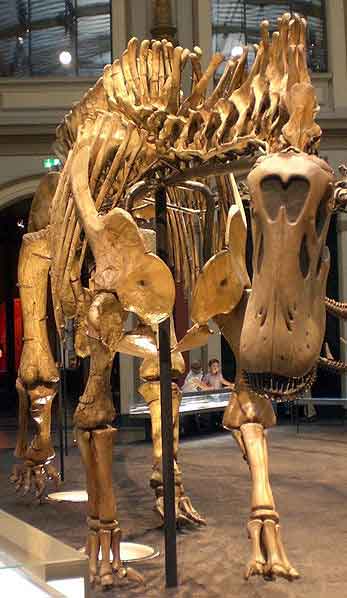
Dicraeosaurus skeleton (*)
| Dicraeosaurus Fossil range: Late Jurassic |
||||||||||||||||||||
|---|---|---|---|---|---|---|---|---|---|---|---|---|---|---|---|---|---|---|---|---|
| Scientific classification | ||||||||||||||||||||
|
||||||||||||||||||||
| Species | ||||||||||||||||||||
|
Dicraeosaurus (Gr. dikraios "bifurcated, double-headed" + Gr. sauros "lizard") is a genus of small diplodocoid. It was named for the spines on the back of the neck. The first fossil was described by paleontologist Werner Janensch in 1914.
Unlike most diplodocoids, Dicraeosaurus had a large head since its neck was shorter and wider. It also lacked the whiplash tail that diplodocids had. Its size was also different. It only reached 41 feet in length. It gets its name, which means two-forked lizard, from the spines that came from the vertebrae. They were not straight as in some members of the family. Each one was “Y” shaped, like a fork. These spines also provided muscle attachment points.
Dicraeosaurus lived in the Late Jurassic, along with the other dinosaurs and kin that lived during that time. It was herbivorous; however, it didn’t compete with other dinosaurs for vegetation. Fossils have been discovered in the rocks of Tendaguru Hill in Tanzania. The rocks also yield fossils of Brachiosaurus and Kentrosaurus. This presents evidence that these were the herbivores that Dicraeosaurus lived with, so it would not have had to compete for food because they all grazed at different levels.

Dicraeosaurus hansemanni (*)
Retrieved from "http://en.wikipedia.org/"
All text is available under the terms of the GNU Free Documentation License

